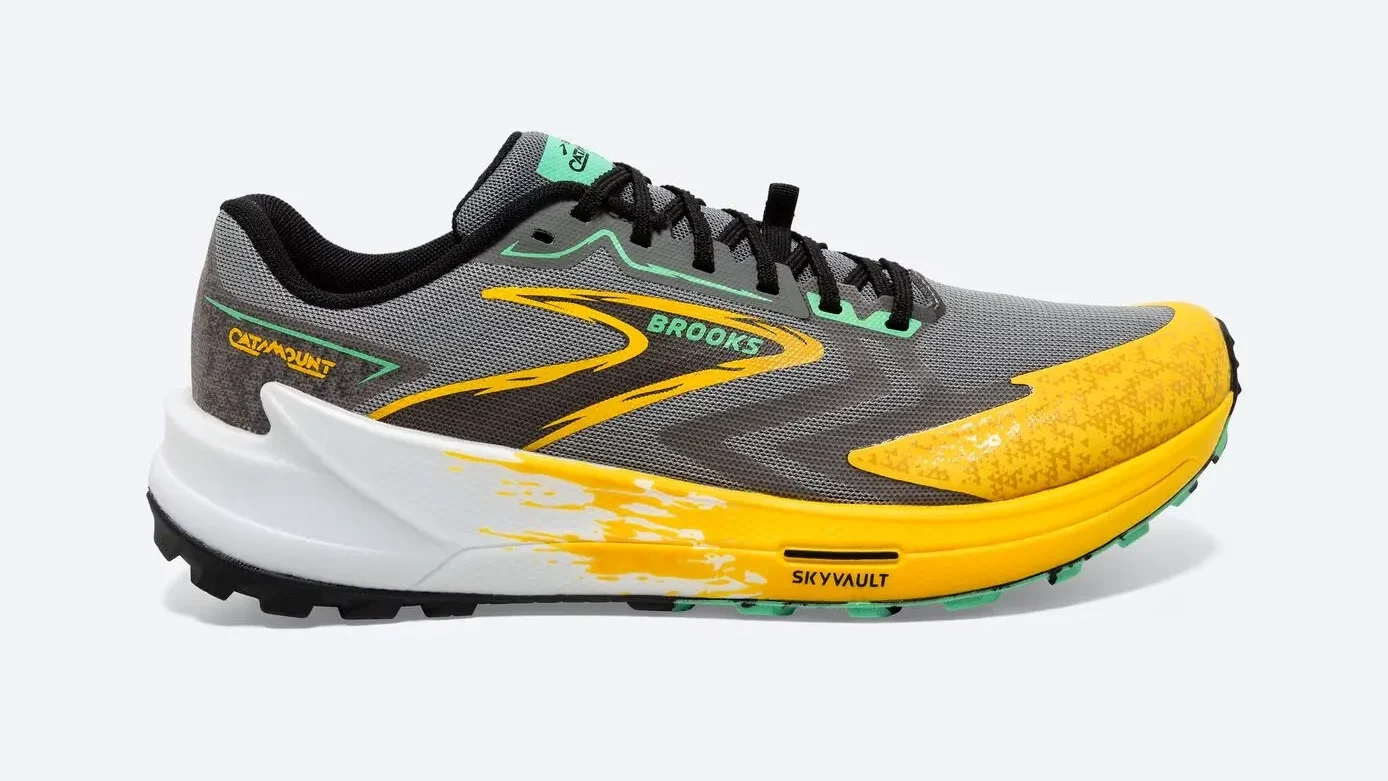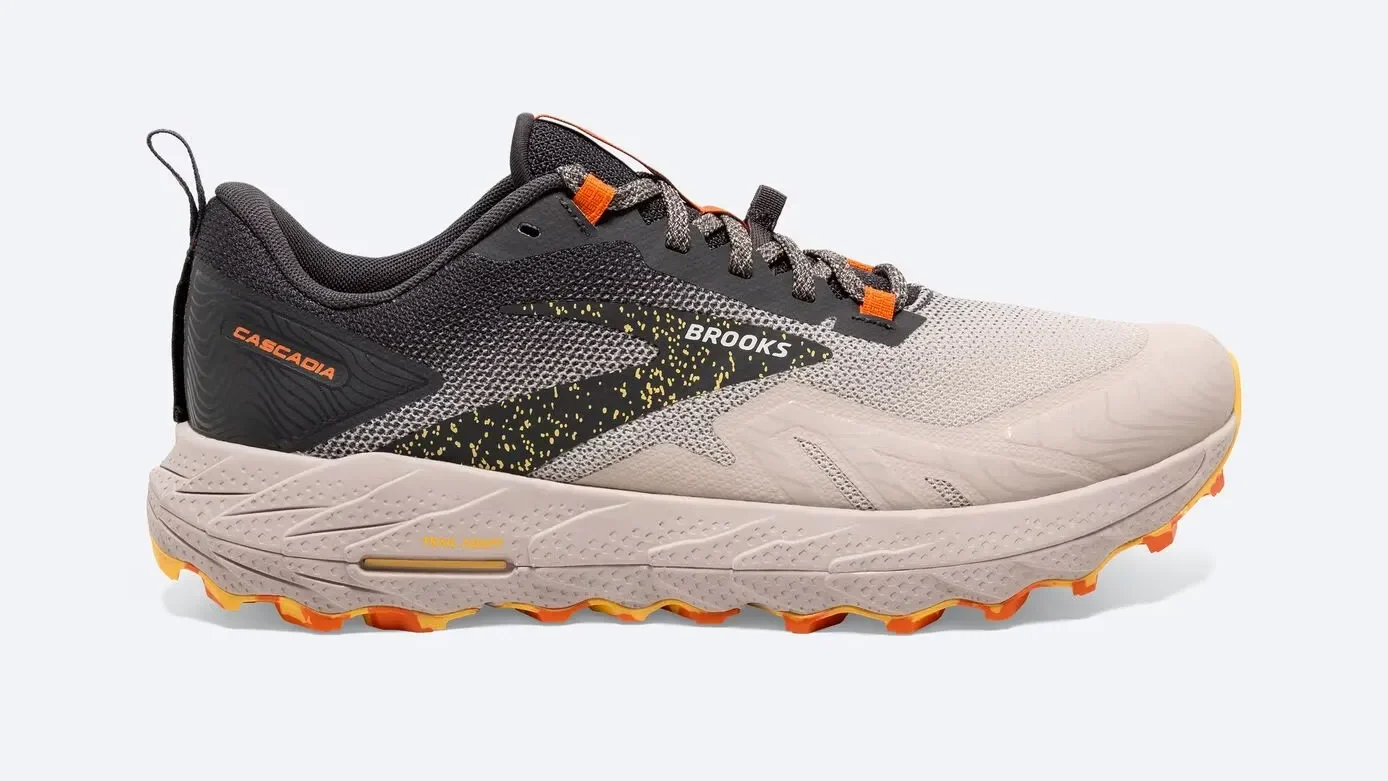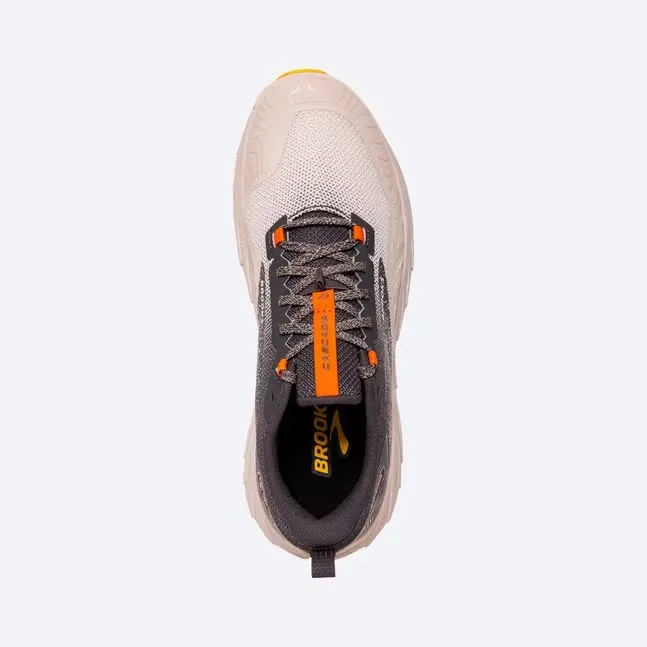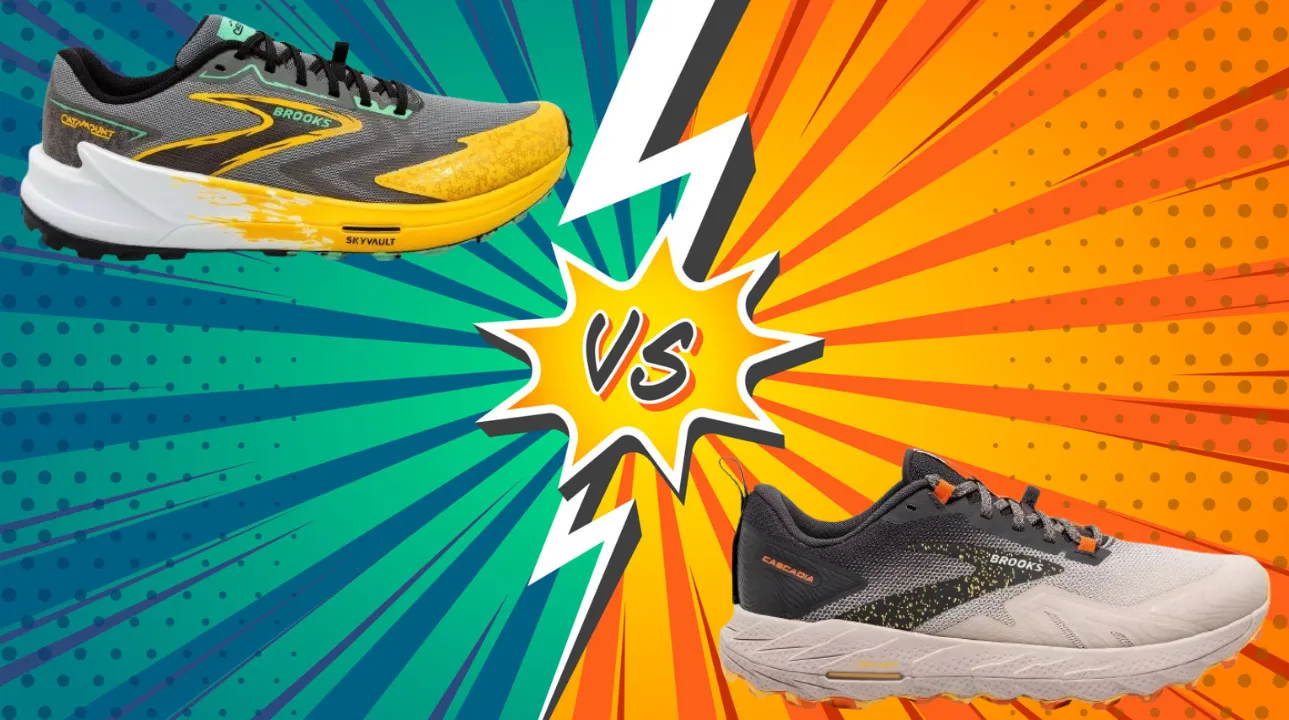Finding the perfect trail running shoe means balancing cushioning, stability, and durability to tackle unpredictable terrain. Two popular options from Brooks are the Catamount 3 and Cascadia 17, both engineered for off-road adventures.
The Catamount 3 boasts a lightweight, responsive ride for dynamically navigating roots and rocks. Meanwhile, the beefed up Cascadia 17 focuses on softening impact and preventing injury over endless miles. With differences in cushioning systems, traction, and weight, choosing the right model depends on your priorities.
Comparison Table Between Brooks Catamount 3 VS Brooks Cascadia 17:
| Feature | Brooks Catamount 3 | Brooks Cascadia 17 |
|---|---|---|
| Launch Date | 2024 | 2023 |
| Stability | Medium stability | Medium stability |
| Flexibility | Moderate flexibility | Moderate flexibility |
| Sizing | Runs small, size up 0.5 | Runs true to size |
| Weight | 10.2oz men’s, 8.9oz women’s | 11.2 oz for men’s size 9 |
| Cushion | Moderate cushioning | Highly cushioned |
| Outsole | Trail-specific outsole | Trail-specific outsole |
| Midsole | BioMoGo DNA midsole | DNA LOFT v3 midsole |
| Upper | Engineered air mesh | Engineered mesh |
| Retail Price | $170 | $140 |
Features Comparison:
Materials:
The Catamount 3 utilizes Brooks’ BioMoGo DNA cushioning in the midsole, which is made from earth-friendly materials and provides adaptive, responsive padding. The engineered air mesh upper allows ventilation to keep feet cool.


The Cascadia 17 features DNA LOFT v3 foam in the midsole for soft, flexible cushioning. The engineered mesh upper is also highly breathable and abrasion-resistant. Both have trail-specific outsoles, with the Cascadia 17’s being more rugged.
Durability:
The Cascadia 17 is built to last, with user reviews praising its high mileage durability. The aggressive, multi-directional lugs on the outsole grip well even as rubber wears down. The reinforced upper also resists damage from debris and abrasion.
The Catamount 3 has decent durability but its outsole and upper materials are less sturdy over long term use. For optimal longevity on rugged trails, the Cascadia 17 is the clear winner.
Fit :
The Cascadia 17 offers a true-to-size length fit for most runners, although the toe box runs narrow. Meanwhile, the Catamount 3 runs small in length so sizing up half a size is recommended for the best fit.


The toe box is also narrow in both models. For wider feet, choosing a wider width may be needed. The Cascadia 17 better accommodates various foot shapes thanks to its true-to-size length.
Cushioning:
The Cascadia 17 provides superior cushioning with its DNA LOFT foam which has zonal padding for softness where you need it most. This makes the shoe ideal for ultra-distance comfort.
The Catamount 3 has a lower profile BioMoGo DNA midsole for moderate cushioning best for shorter distances or runners wanting ground feedback. For the most responsive, pillow-like cushioning over many miles, the Cascadia 17 is the clear winner.
Stability:
Both shoes incorporate stabilization elements like guide rails and midsole walls to support neutral pronation. The Cascadia 17 also has a stability post to prevent excessive inward rolling. For mild to moderate overpronators, the Cascadia 17 offers better motion control.
The Catamount 3 focuses more on an agile ride over pronation support. So runners needing pronation correction will favor the Cascadia 17 while neutral runners can enjoy both models.
comparison:
Walking:
The Cascadia 17’s DNA LOFT cushioning system provides excellent shock absorption and bounce when walking on hard surfaces, resulting in superior comfort during walking compared to the Catamount 3. The plush midsole cushions each step, reducing foot fatigue and pain.
Meanwhile, the firmer BioMoGo DNA foam in the Catamount 3 does not dampen impact as effectively, resulting in worse walking comfort over long distances. For all-day wear, running errands, or hike-a-bike sections, the Cascadia 17 is clearly the better choice for comfort.
Running:
For quick trail runs where agility and ground feedback are needed, the Catamount 3 allows better maneuverability and response thanks to its lower profile sole.
The responsive foam provides a snappy, efficient ride at faster paces. In comparison, the highly cushioned Cascadia 17 lacks ground feedback and flexibility for faster speeds. However, over long distances, the Cascadia 17 shines by providing continuous padded comfort mile after mile. So for ultra distances or recovery runs, the Cascadia 17 prevails.
Standing:
With its plush DNA LOFT midsole and arch support features, the Cascadia 17 reduces discomfort and fatigue in the feet and legs during prolonged standing. The continuous cushioning helps wearers power through long work shifts with less pain.
In contrast, the thinner BioMoGo DNA midsole of the Catamount 3 compresses more easily, leading to worse comfort and foot soreness when standing for extended periods. For jobs that require all-day standing, the Cascadia 17 has superior comfort.
Plantar Fasciitis:
The Cascadia 17 provides excellent relief for plantar fasciitis thanks to its DNA LOFT cushioning system that softens impact, preventing inflammation and pain. The stability features also support the foot’s natural alignment to reduce strain on the plantar fascia.
Comparatively, the Catamount 3’s thinner midsole does not absorb shock as well, while the lack of stability elements fails to control pronation – both factors that can aggravate plantar fasciitis. For managing this condition, the Cascadia 17 is the clear choice.
conclusion:
Overall, the Brooks Cascadia 17 emerges as the stronger choice for most trail runners with its superior cushioning, stability, and durability. The plush DNA LOFT midsole provides responsive, pillow-like softness that maintains comfort over any distance, making the Cascadia an excellent choice for ultramarathoners.
Its stability features also aid in injury prevention for mild overpronators. While the Catamount 3 is praised for its nimble ride, the narrow fit and lack of pronation support limit its versatility. Unless you specifically need an agile, lightweight design for fast-paced trail runs, the Cascadia 17 prevails as the more balanced trail shoe.
From day hikes to 100 milers, the Cascadia 17 has the well-rounded performance to take on nearly any route with cushioned support. For trail running you can trust mile after rugged mile, make the Cascadia 17 your adventure companion.

